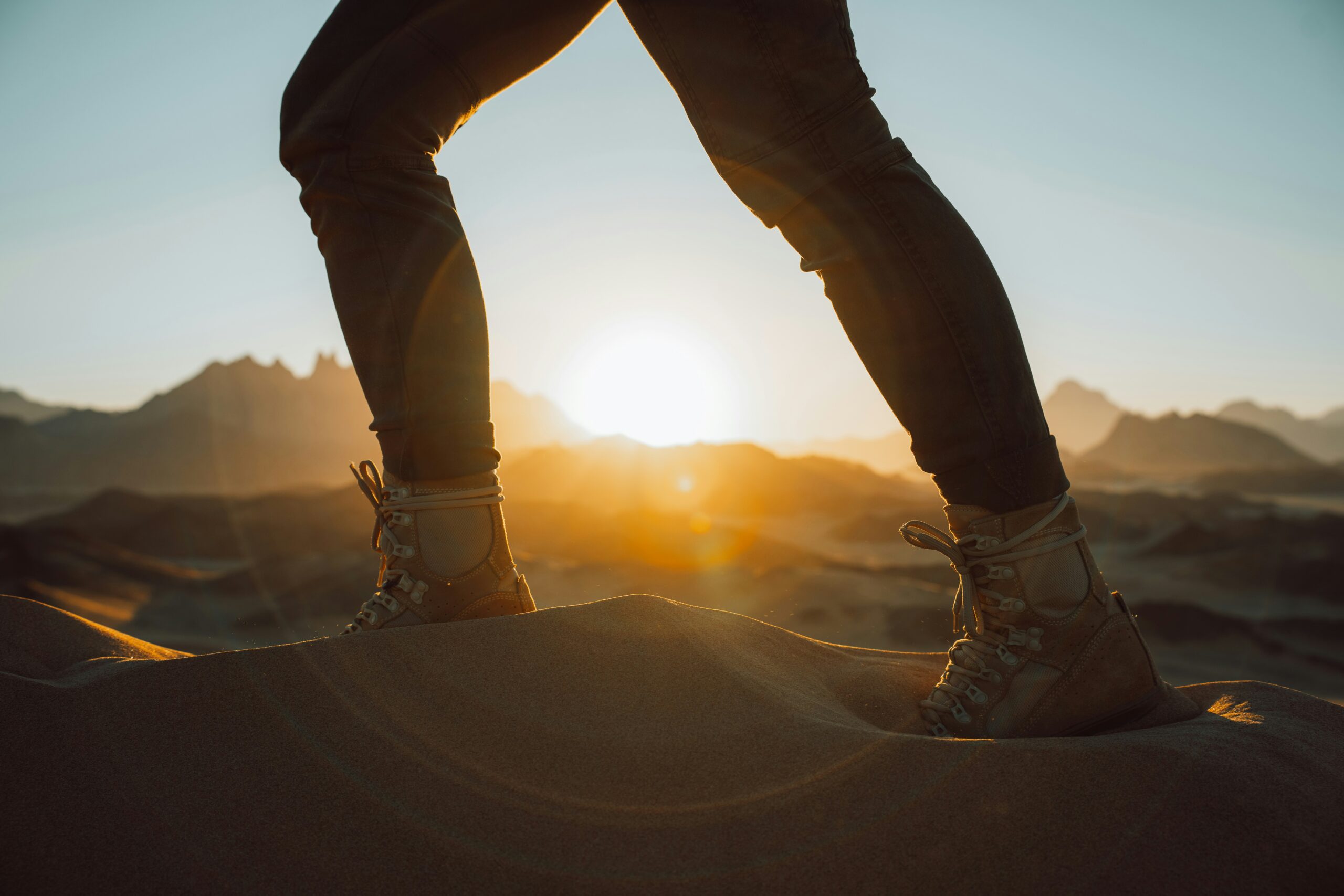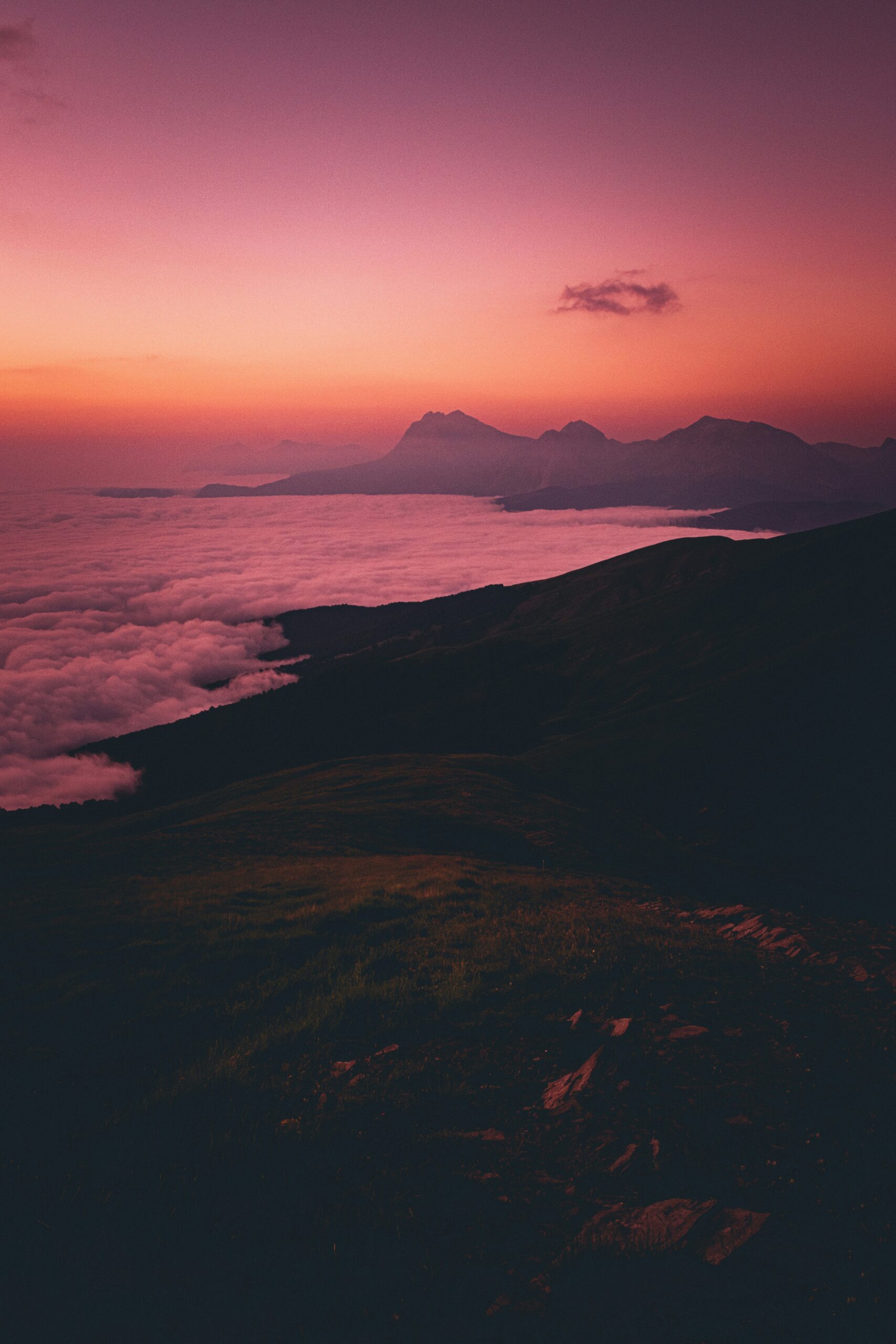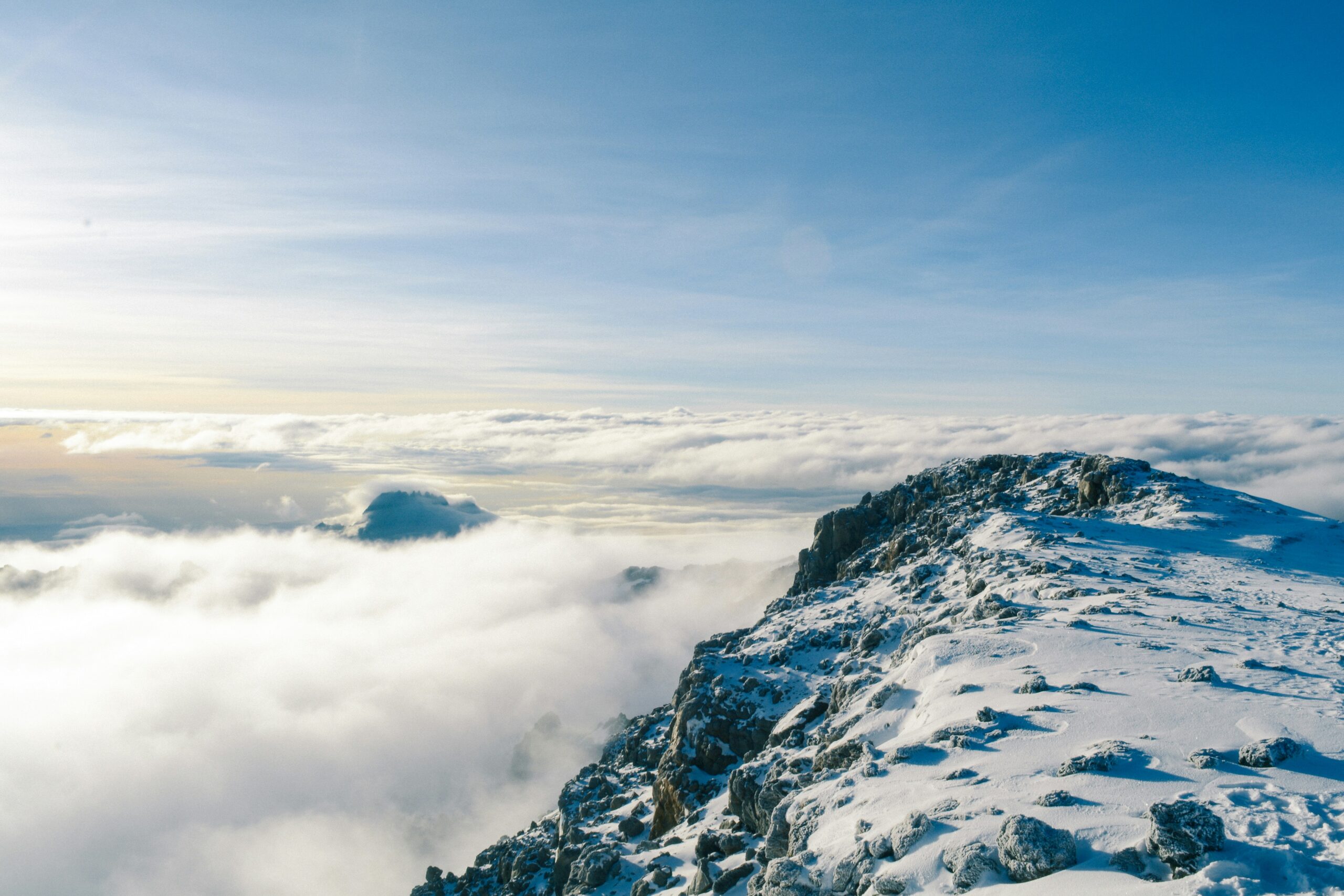Imagine the thrill of embarking on a breathtaking sunrise hike to the majestic summit of Mount Shasta. As the golden rays of dawn break through the horizon, illuminating the vast expanse of wilderness, you find yourself immersed in a surreal world of natural beauty. With each step forward, your anticipation grows, knowing that this once-in-a-lifetime experience will reward you with panoramic views and a sense of unparalleled achievement. Lace up your boots, pack your sense of adventure, and get ready to witness the awe-inspiring wonders that await you on this unforgettable journey.

Understanding Mount Shasta
Geographical orientation
Mount Shasta, located in Northern California, is a majestic and iconic mountain with a towering presence. It is situated in the southern end of the Cascade Range, which stretches from British Columbia down to California. Rising to an impressive height of 14,179 feet, Mount Shasta stands as the second-highest peak in the Cascade Range. Its prominent volcanic cone can be seen from miles away, making it a distinct landmark in the region.
Height and prominence
With its towering height, Mount Shasta offers a challenging yet rewarding experience for avid climbers and outdoor enthusiasts. Its prominence, a measure of a mountain's vertical rise, is an impressive 9,782 feet, making it one of the most prominent peaks in the contiguous United States. This prominence adds to the allure of conquering the summit, as it provides a sense of achievement and awe-inspiring views from the top.
Mythical and cultural significance
Mount Shasta holds immense mythical and cultural significance, making it a revered destination for many. According to Native American tribal legends, the mountain is considered a sacred place and is believed to be the home of powerful spirits. It is also associated with various mythical stories and tales of supernatural occurrences, further adding to its allure. Today, Mount Shasta continues to be a place of spiritual retreat and pilgrimage for individuals seeking solace and connection with nature.
Preparing for the Climb
Assessing physical abilities
Before embarking on the journey to Mount Shasta's summit, it is essential to assess your physical abilities honestly. Climbing a mountain of this magnitude requires a good level of fitness and endurance. Consider engaging in regular cardio exercises, such as hiking, jogging, or cycling, to build your stamina and strengthen your muscles. Additionally, incorporating strength training exercises will help prepare your body for the physical demands of the climb.
Acquiring necessary gear
Equipping yourself with the right gear is crucial for a successful and safe climb. Invest in high-quality hiking boots that offer ankle support and traction, as the terrain on Mount Shasta can be challenging and vary in conditions. Layered clothing, including moisture-wicking base layers, insulating mid-layers, and a waterproof outer shell, will help you stay comfortable and protected from the elements. Other essential gear includes a backpack, trekking poles, a headlamp, a map and compass, and sufficient food and water supplies.
Preparing for high altitude hiking
As you climb higher, the decreasing oxygen levels can pose challenges to your body. To prepare for high altitude hiking, consider incorporating aerobic exercises into your training routine, such as running or cycling at higher elevations if possible. This allows your body to acclimate gradually and adapt to the lower oxygen levels. Additionally, practicing deep breathing techniques can help optimize oxygen intake during the climb.
Basic survival skills
Being equipped with basic survival skills is essential when venturing into the wilderness. Familiarize yourself with basic first aid procedures, including treating blisters, sprains, and minor injuries. Additionally, learning how to navigate using a map and compass, understanding weather patterns, and knowing how to start a fire safely are valuable skills that can make a significant difference in emergency situations. Taking a wilderness survival course or consulting with experienced climbers can provide you with the necessary knowledge and confidence for your ascent.
Best Season for the Hike
Climate throughout the year
Mount Shasta's climate varies significantly throughout the year, and choosing the right season for your hike is crucial. Summers, from July to September, offer the most favorable weather conditions for climbing, with milder temperatures and reduced chances of snowfall. Spring and fall can be unpredictable, with rapidly changing weather patterns and occasional snowstorms. Winter climbs are only recommended for experienced climbers due to the extreme cold, heavy snowfall, and higher risks of avalanches.
Effects of weather on the terrain
Weather conditions greatly impact the terrain on Mount Shasta, and understanding these effects is essential for a safe climb. During winter and spring, the mountain is covered in deep snow, making travel more challenging and increasing the risk of avalanches. As summer approaches, the snow melts, revealing rocky and sometimes unstable terrain. Lightning storms are also common during summer afternoons, so it's important to plan your ascent accordingly and be mindful of potential hazards.
Recommendations from experienced climbers
Seeking advice from experienced climbers who have successfully summited Mount Shasta can provide valuable insights and recommendations. They can offer suggestions on the best season for climbing, the most suitable routes, and tips for navigating the terrain. Their firsthand experiences can help you make informed decisions and prepare adequately for the climb. Online forums and mountaineering communities are excellent resources for connecting with experienced climbers and seeking their guidance.
Getting to Mount Shasta
Various transportation modes
Reaching Mount Shasta involves considering various transportation options. If you're traveling from a distant location, flying to a nearby airport, such as Redding Municipal Airport or Rogue Valley International-Medford Airport, is a convenient choice. From there, renting a car or coordinating with a shuttle service will allow you to reach Mount Shasta. If you're already in California, driving to the mountain is an excellent option, as it allows you to have more flexibility and independence during your trip.
Nearest accommodation and facilities
There are several accommodation options near Mount Shasta to suit different preferences and budgets. From cozy lodges and mountain resorts to campgrounds and vacation rentals, there is something for everyone. The town of Mount Shasta itself offers a range of amenities, including restaurants, grocery stores, and outdoor supply shops, ensuring you have easy access to any last-minute essentials before your climb.
Availability of guide services
If you're a novice climber or prefer the guidance and expertise of professionals, hiring a guide service is highly recommended. Mount Shasta has several reputable guide services that offer guided climbs, instruction, and assistance with logistics. These experienced guides possess a wealth of knowledge about the mountain and can enhance your safety and overall experience. They can also provide additional equipment, such as ropes and crampons, if needed, ensuring you are thoroughly prepared for the climb.

Starting the Hike
Planning the night before ascent
The night before your ascent, it is crucial to plan and prepare adequately to ensure a smooth start to your hike. Double-check all your gear, ensuring you have everything you need and that it is in good working condition. Pack sufficient food and water for the duration of your hike, considering the estimated time it will take to reach the summit and return. Familiarize yourself with the trailhead location, noting any specific directions or parking regulations. Lastly, get a good night's sleep, allowing your body to rest and prepare for the physically demanding hike ahead.
Navigating the trail in darkness
Starting your hike well before sunrise means that you will be navigating the trail in darkness. It is crucial to have a reliable headlamp with fresh batteries to illuminate the path ahead. Familiarize yourself with the route before setting off, studying maps and guidebooks in advance. Pay attention to any trail markers or cairns that can guide you along the way. Knowing how to use a compass and reading the terrain will help you navigate accurately, ensuring you stay on the right path despite the darkness.
Keeping track of time and distance
As you embark on the hike to Mount Shasta's summit, it is essential to keep track of time and distance to ensure you stay on schedule and remain safe. Set clear checkpoints along the trail, estimating how long it should take you to reach each point. Use a watch or a timer on your phone to monitor your progress and make any necessary adjustments to your pace. Remember, it is better to pace yourself and arrive at the summit safely than to rush and risk exhaustion or accidents along the way.
Experiencing the Ascent
Flora and fauna on Mount Shasta
Mount Shasta boasts a diverse and vibrant ecosystem, offering an exciting opportunity to observe unique flora and fauna as you ascend. The lower elevations of the mountain are adorned with lush forests, including grand firs and Douglas firs, providing shade and tranquility. As you gain elevation, you will encounter alpine meadows adorned with colorful wildflowers, such as lupines and Indian paintbrushes. Keep an eye out for wildlife, including marmots, deer, and a variety of bird species that call this mountain home.
Physical demands during ascent
Ascending Mount Shasta is a physically demanding endeavor that requires both strength and endurance. The terrain varies from rocky slopes to steep snowfields, requiring careful foot placement and efficient movement. The higher altitude adds an extra challenge, as your body adjusts to the thinner air. Take frequent breaks to catch your breath, drink water, and refuel with nourishing snacks. Pace yourself and listen to your body, pushing yourself within your limits to ensure a safe and enjoyable climb.
Key landmarks and viewpoints
As you make your way towards the summit, several key landmarks and viewpoints will captivate you with their beauty and significance. The Red Banks, a striking red rock formation, offers a stunning visual contrast against the icy slopes of the mountain. The Misery Hill, an arduous and steep section of the climb, marks a significant milestone in your ascent. Finally, reaching the summit plateau provides a sense of accomplishment and offers breathtaking panoramic views of the surrounding Cascade Range and beyond.

Reaching the Summit at Sunrise
Description of the sunrise view
Reaching the summit of Mount Shasta just in time for sunrise is an awe-inspiring experience that rewards all the effort and determination. As the first rays of sunlight illuminate the landscape, the entire mountain range comes alive with vibrant colors and a warm glow. The surrounding valleys and forests below appear as a patchwork quilt, bathed in golden hues. Looking east, you can witness the sun's ascent above the distant horizon, casting a spectacular display of light and shadow on the land.
Feelings and emotions
Standing on the summit of Mount Shasta at sunrise evokes a flurry of emotions, ranging from sheer exhilaration to deep tranquility. The enormity of the mountain and the beauty of the surrounding landscape instill a sense of awe and reverence. Accomplishing the climb and witnessing such a natural spectacle fills you with a profound sense of achievement, reminding you of the resilience and strength you possess. It is a moment to embrace and cherish, a memory that will forever be etched in your heart.
Taking photos and videos
Capture the magical moments of the sunrise on Mount Shasta by taking photos and videos to relive the experience. Ensure you have a camera or smartphone with sufficient battery life and memory space. Experiment with different angles and compositions, capturing the vastness and grandeur of the landscape. Remember to also take some time to simply soak in the beauty and majesty of the moment, allowing yourself to be fully present and connected with the surroundings.
Safety Measures
Handling adverse weather conditions
The weather on Mount Shasta can change rapidly, presenting potential hazards and challenges. It is essential to stay informed about weather forecasts and be prepared to adjust your plans accordingly. If adverse weather conditions, such as thunderstorms or heavy snowfall, are predicted, it may be wise to postpone your climb. If you encounter unexpected weather changes during the hike, seek shelter, such as a rocky outcrop or a protected area, until conditions improve. Remember, your safety should always be the top priority.
Preventing altitude sickness
As you ascend to higher elevations, the risk of altitude sickness increases. To prevent altitude sickness, it is crucial to acclimate gradually and listen to your body. Stay well-hydrated by drinking plenty of water throughout the climb. Consider carrying altitude sickness medication, such as acetazolamide, if recommended by a healthcare professional. Take frequent breaks to allow your body to adjust to the altitude, and if you experience severe symptoms, such as shortness of breath or dizziness, descend immediately.
Dealing with potential hazards
Mount Shasta presents various potential hazards that climbers need to be aware of and take precautions against. Icy and slippery slopes can increase the risk of falls, so using crampons for traction and having proper ice axe techniques are essential skills to possess. Be cautious of hidden crevasses on glaciers, especially during spring and early summer when they may be covered with snow. Additionally, beware of rockfall and loose rocks while climbing. Wearing a helmet and being vigilant about your surroundings can mitigate the risks associated with these hazards.
Descending from the Summit
Coping with fatigue and muscle ache
After reaching the summit, the descent can be physically demanding as well. Fatigue and muscle aches may start to set in, making it crucial to pace yourself and use proper techniques to minimize strain on your body. Descending in a zigzag pattern allows your knees to absorb impact more effectively, reducing the risk of knee pain. Take short breaks if needed, refueling your body with snacks and water to replenish energy levels. Listening to your body and adjusting your pace accordingly will help you safely navigate the descent.
Navigating the trail during daylight
As you descend from the summit, you will have the advantage of daylight, making navigation easier and safer. Follow the markers and cairns along the trail, ensuring you are on the right path. Make note of any distinctive landmarks or signs that you encountered on the ascent, as they can serve as helpful references during the descent. Stay attentive to changes in the terrain, and take breaks to enjoy the daytime views that you may have missed during the climb in darkness.
Enjoying the daytime view
Descending Mount Shasta during daylight offers a unique perspective and allows you to appreciate the beauty of the mountain in an entirely different way. The lush alpine meadows, the towering forests, and the various shades of blue of nearby lakes and rivers all become more vibrant and inviting. Take the opportunity to rest and relax in serene spots along the trail, appreciating the tranquility and silence that nature offers. This is also an excellent time to reflect on the journey, savoring the memories and embracing the sense of accomplishment.
Reflecting on the Experience
Recap of the journey
Reflecting on the journey to Mount Shasta's summit, you can't help but be amazed by the challenges you overcame and the awe-inspiring moments you experienced. From the physical demands to the breathtaking views, each step was part of an extraordinary adventure. Recall the excitement of planning, the anticipation before the climb, and the moments of doubt and determination. Let the memories of encountering diverse flora and fauna, conquering steep slopes, and witnessing a spectacular sunrise fuel your spirit for future adventures.
Post-climb relaxation
After you descend from Mount Shasta, take the time to relax and rejuvenate your body and mind. Soothe tired muscles with a gentle stretch or a yoga session. Treat yourself to a warm bath or a refreshing dip in a nearby natural hot spring. Engage in activities that promote relaxation, such as reading a book, participating in a guided meditation, or simply enjoying the tranquility of nature. This post-climb relaxation is essential for recovery and replenishing your energy levels.
Feeling of accomplishment
Climbing Mount Shasta's summit at sunrise is no small feat, and the feeling of accomplishment that accompanies it is unparalleled. Embrace the sense of achievement and recognize the strength and resilience within yourself. Take pride in the determination and effort you invested to reach the summit and witness the beauty and grandeur of nature from such a remarkable vantage point. The experience of conquering Mount Shasta becomes a source of inspiration and a reminder that you are capable of achieving incredible feats when you set your mind to it.
